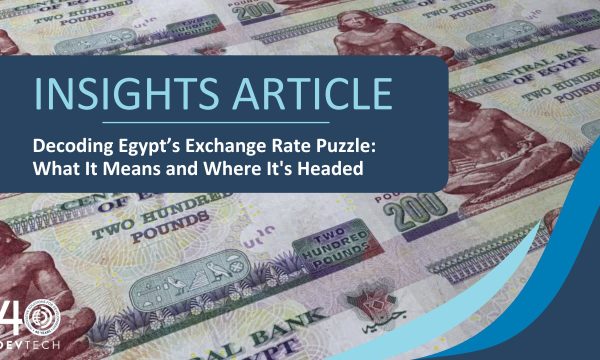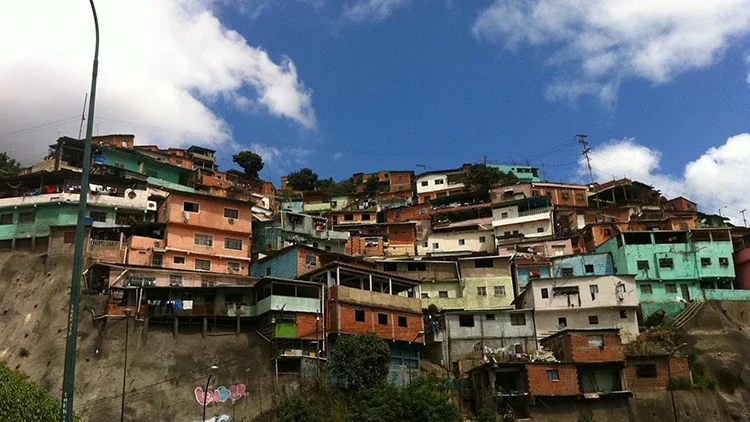Introduction
Following the ascent of socialist leader Nicolás Maduro in 2013, the Venezuelan economy shrank by approximately 77.3 percent,[1] with GDP reaching levels not seen since 1963.[2] It also experienced a 71.7 percent decrease in its potential GDP—or, the level of GDP that could be achieved if capital and labor resources were fully utilized.[3] Beginning in November 2017, the country experienced one of the longest and most pernicious hyperinflationary spirals in the economic history of Latin America. By September 2022, prices in Venezuela saw a cumulative increase of approximately 144.3 billion percent since November 2017,[4] having reached a peak in January 2019 when inflation registered an increase of 2.7 million percent compared to the same month of the previous year.[5] In terms of employment, the number of Venezuelans working in the informal sector jumped by 16 percent between 2013 and 2020, with 5.3 million people in the informal sector in 2013 and 6.1 million people in the same sector at the end of the first half of 2020.[6] Women in particular have been affected by this structural change in the labor market, with 30 percent more women working in the informal sector in the first half of 2020 than in 2013, that is, 2.5 million women in mid-2020 compared to 1.9 million women in 2013.[7]
Since the onset of the COVID-19 pandemic, however, the Venezuelan economy has shown some signs of recovery. In fact, in recent months, numerous articles and social media posts have been published online proposing that Venezuela may be “fixed”—”Venezuela se arregló”. In 2021, as part of the annual presidential address to the National Assembly (known in Venezuela as “Memoria y Cuenta”), Maduro announced that the Venezuelan economy had grown by at least 4 percent that year. He also reported that in terms of aggregate demand, household consumption, government consumption spending, investment, and non-oil exports had all increased by 4.9 percent, 8.7 percent, 3.1 percent, and 4.9 percent, respectively.[8] Unfortunately, no complete and updated official statistical information on the economic performance of Venezuela has been released by the Central Bank since October 2019, making Maduro’s claims unverifiable. Additionally, while the rate of increase in prices in Venezuela has slowed significantly, the country continues to experience annualized inflation in the three-digit range.
In this article, we will present data that aims to capture the reality of Venezuela’s economic performance considering an external context characterized by significant uncertainty as a result of high levels of inflation in the United States and an increase in raw materials (especially oil) due to the Russian invasion in Ukraine.
Venezuela’s 2021 performance: the end of the country’s economic free fall, increasing levels of inequality, and no foundation for a long-lasting recovery
While the Maduro regime indicated that private consumption grew by 4.9 percent in 2021, the National Survey on Living Conditions (ENCOVI) found that food consumption by Venezuelans in real terms per capita decreased in that same year by between 2 percent and 13 percent depending on household income group.
As shown in Graph 1, according to the 2021 ENCOVI study, 94.3 percent of households surveyed reported that they suffer from mild to severe food insecurity, an increase of 0.9 percentage points from 2020, with a 1.2 percentage point increase in severely food insecure households, indicating that households have had to reduce the quantity consumed of or cease consuming one or more items in their daily diet.
Graph 1. Percent of families experiencing food insecurity in Venezuela (percentages)

Similarly, as shown in Graph 2, all income groups reported having to reduce their food consumption, with households in the extreme poverty category reporting the greatest decrease in food consumption at 13.3 percent. In addition, it is worth noting that non-extreme poor households spent 137 percent more on food than those from the extreme poverty category, while those from the non-poverty strata spent 214 percent more compared to the non-extreme poverty strata reflecting important inequalities in consumption.
Graph 2. Food consumption (US$ per capita)

As can be seen in Graph 3, regarding the re-distribution of income, Venezuela’s 2021 Gini index was 0.567, with 0 representing perfect equality, and 1 representing maximal inequality. While 2021’s Gini coefficient is lower than the country’s coefficient in 2017—the year that hyperinflation started in Venezuela—it is still above 50 percent, meaning that the country’s richest stratum kept approximately 60 percent of the population’s total income.[9] Additionally, between 2020 and 2021, there is an upward trend in inequality levels with the Gini index increasing by 14.55 percent.
Graph 3. Gini index for Venezuela

In addition to increasing rates of informality, the labor situation in Venezuela can be summarized as follows:[10]
- There is low participation in the labor market, with only 53.8 percent of people between the ages of 15 and 64 participating, meaning that around 8.8 million adults of productive age do not generate autonomous income and are in a situation of dependency.
- Despite the increase in wages offered by the private sector in 2022, they remain low relative to other countries in the region. According to recent estimates, the average remuneration of the commerce and services sector in the Metropolitan Area of Caracas (the nation’s capital) reached just US$ 116 per month in April 2022—a figure 76 percent lower than the cost of the basic household food basket covering the essential calorie needs of a household, which at that time was around US$ 480.92 per month.[11] As a comparison, the minimum monthly wage in other countries in the region include: US$ 310 in Argentina, US$ 396 in Chile, and US$ 244 in Colombia.[12]
- Salaries in the public sector continue to be extremely low; an average employee receives an income of US$ 21 per month,[13] representing 82 percent less than in the private sector.
- Remittances support the basic expenses of many families in Venezuela. However, only 24.3 percent of the population receive them, and they average around US$ 65.8 per month. It is worth noting that this figure is higher than the salary of a public employee, but lower than the salary of a private sector employee.
Regarding investment, the socialist regime announced that in 2021, investment in Venezuela increased by 3.1 percent compared to the previous year, representing a very significant increase considering that prior to 2021, the country had experienced a continuous decline in investment since 2013. For its part, the Venezuelan Confederation of Industrialists (CONDINDUSTRIA) also reported experiencing small improvements; however, these were mostly related to inventory accumulation and not physical capital accumulation (e.g., buildings, machinery, etc.). The CONDINDUSTRIA survey conducted in the fourth quarter of 2021 indicates that for that year, 34 percent of the industries surveyed experienced low increases in the supply of raw materials compared to the same quarter of the year before. Additionally, 43 percent of the industries indicated that production levels in physical units saw small increases compared to the same quarter of 2020. It is also worth mentioning that, on average, the surveyed companies used 27 percent of their installed capacity during the last quarter—39 percentage points lower than in Argentina, and 54 percentage points lower than in Brazil during the same period.[14] The chemical and pharmaceutical sector used the greatest capacity during the period under study, at 36 percent of its total capacity. Right behind was the food, beverage, and tobacco sector, which used 33 percent of its total capacity.
In terms of investments, 41 percent of the companies surveyed by CONDINDUSTRIA responded that most of the investments made were related to inventory replenishment. At 37 percent, the second most frequently cited type of investments made by companies were those required for the operation of the companies. However, 42 percent of the companies surveyed indicated that they do not plan to make investments in any other category due to limited sources of financing, low sales levels as a result of low consumer demand, and high labor costs.
Venezuela’s 2022 performance: “recovery” in a very uncertain environment
Despite the moderate economic recovery experienced globally in 2021, in its most recent World Economic Outlook, the International Monetary Fund estimates that by 2022 this favorable performance will experience a slowdown.[15] This is due in part to the economic recessions that are expected to take place in China as a result of the recurring COVID-19 outbreaks and ensuing confinements in China’s most important cities. This is also partly due to an anticipated recession in Russia that is expected to occur as a result of the county’s invasion of Ukraine, which began in February of this year.
In Venezuela, according to calculations made by the Venezuelan Finance Observatory, the country’s economic activity was 12.3 percent higher in the first half of 2022 than it was in the same period of the previous year.[16] This was driven by a 29.8 percent rise in oil production between June 2021 and June 2022.[17] However, this economic growth is likely not sustainable over time because it is driven by exogenous factors such as an increase in oil prices caused by the Russian invasion of Ukraine. This positive shock for the Venezuelan economy can only be sustained if the country implements a credible stabilization program with clear fiscal, monetary, and exchange policies.[18] It should be noted that for Venezuela’s economy to return to the size it reached in 2013—the last year the country experienced economic growth—it would have to grow at an annual rate of 5.6 percent for 29 consecutive years.[19]
Regarding inflation, since 2019, Venezuela has seen slowing price growth rates, even registering single-digit levels of monthly inflation starting in 2021. However, this does not necessarily mean that the country has formally exited hyperinflation territory. Indeed, the Venezuelan economy still experiences year-on-year variations in inflation at least in the three-digit range. Another aspect to highlight is that the purchasing power of the dollar in Venezuela decreased by 35 percent compared to January 2021 due to the worldwide increase in inflation and the existing imbalances in the Venezuelan economy.[20] Likewise, uncertainty related to the stability of the exchange rate persists in the Venezuelan economy; during the week of August 26, 2022, the value of the dollar presented by the Central Bank of Venezuela increased daily by 12 percent, registering an accumulated devaluation of 27 percent with respect to the month of July,[21] going from Bs./US$ 6.18 to Bs./US$ 7.85.[22] This is due to the fact that the Central Bank of Venezuela—controlled by the Maduro regime—has progressively reduced its supply of dollars to the foreign exchange market, causing Venezuelan banks that offer foreign currency not to carry out sales operations.[23] This has resulted in buyers migrating to the parallel market where the domestic currency depreciated by 23.2 percent, going from Bs./US$ 6.95 to Bs./US$ 8.56 on August 26, 2022.[24]
The reason behind the reduction in the supply of foreign currency by the Central Bank of Venezuela is likely that last month’s oil production decreased; this is significant given that oil represents more than two thirds of the country’s exports.[25][26] In July 2022, Venezuelan oil production amounted to 629,000 barrels per day, which translates to a reduction of 13.5 percent from the previous month. While August production levels have bounced back to June levels, production is still just a fraction of what it was in 2013, during which time it was closer to 3 million barrels per day.[27]
In summary, unfortunately the Venezuelan economy is far from being “fixed” as claimed by a number of government officials. None of the observed economic improvements seem to be based on long-term solutions that could induce the sustained period of economic growth that the country needs to restore its potential. Today’s improvements are not only driven by external factors, they also come at the expense of further increasing inequalities.
Endnotes
[1] Source: Central Bank of Venezuela, own calculations.
[2] Source: Idem.
[3] Source: Idem. Note that the potential GDP of a country is determined by its long-term growth drivers (e.g., innovation, human capital, etc.).
[4] Source: Central Bank of Venezuela, Venezuelan Observatory of Finance, own calculations.
[5] Source: Idem.
[6] Source: National Institute of Statistics of Venezuela, own calculations.
[7] Source: Idem.
[8] See: https://www.vtv.gob.ve/venezuela-logo-trimestre2021-crecimiento-economico/.
[9] On this occasion, the strata are divided by deciles (strata that correspond to 10 percent of the population) based on the Lorenz curve, which serves as the basis for calculating the Gini index (source: National Survey on Living Conditions (ENCOVI) 2021).
[10] Information taken from: https://thinkanova.org/2022/05/06/venezuela-se-arreglo-tendencias-recientes-en-la-distribucion-del-ingreso/.
[11] Source: https://fedecamarasradio.com/cendas-fvm-la-canasta-basica-de-abril-de-2022-se-ubico-en-1-00471/.
[12] See https://www.bloomberglinea.com/2022/01/05/minimum-salaries-in-latam-and-what-they-can-buy/
[13] Source:https://eldiario.com/2022/09/29/cesta-basica-en-latinoamerica/.
[14] Source: Qualitative Survey of the Industrial Situation for the IV quarter of 2021 of the Venezuelan Confederation of Industrialists (CONINDUSTRIA).
[15] Source: https://www.imf.org/en/Publications/WEO/Issues/2022/07/26/world-economic-outlook-update-july-2022.
[16] See: https://larepublica.pe/mundo/venezuela/2022/07/27/economia-venezolana-economia-de-venezuela-crece-123-durante-el-primer-semestre-de-acuerdo-a-analistas-de-la-oposicion-nicolas-maduro-venezuela-dolar-en-venezuela/.
[17] See: https://www.efe.com/efe/america/economia/la-economia-venezolana-crece-12-3-en-primer-semestre-segun-ente-independiente/20000011-4856872.
[18] See: https://prodavinci.com/jose-pineda-sin-acceso-a-la-informacion-no-hay-credibilidad/.
[19] Source: Central Bank of Venezuela, own calculations.
[20] See: https://www.elimpulso.com/2022/02/22/economistas-aseguran-que-el-dolar-ha-perdido-el-35-de-su-poder-de-compra-22feb/.
[21] Source: https://elpais.com/internacional/2022-08-27/el-alza-abrupta-del-dolar-le-pone-techo-a-la-recuperacion-economica-de-venezuela.html.
[22] Source: https://www.swissinfo.ch/spa/semana-negra–el-d%C3%B3lar-se-dispara-en-venezuela/47856400.
[23] Source: https://www.vozdeamerica.com/a/se-disparo-dolar-paralelo-venezuela/6715307.html.
[24] Source: Dolar Promedio Venezuela, own calculations.
[25] Likewise, it is worth mentioning that in Venezuela, around 82.2% of international reserves are made up of monetary gold. In addition, it is also worth clarifying that since June 2018 there are no official figures on how international reserves are made up in the country (source: World Gold Council International Financial Statistics, October 2022).
[26] Source: https://www.worldstopexports.com/venezuelas-top-10-exports/.
[27] Source: OPEC Monthly Oil Market Report, August 2022 own calculations.








